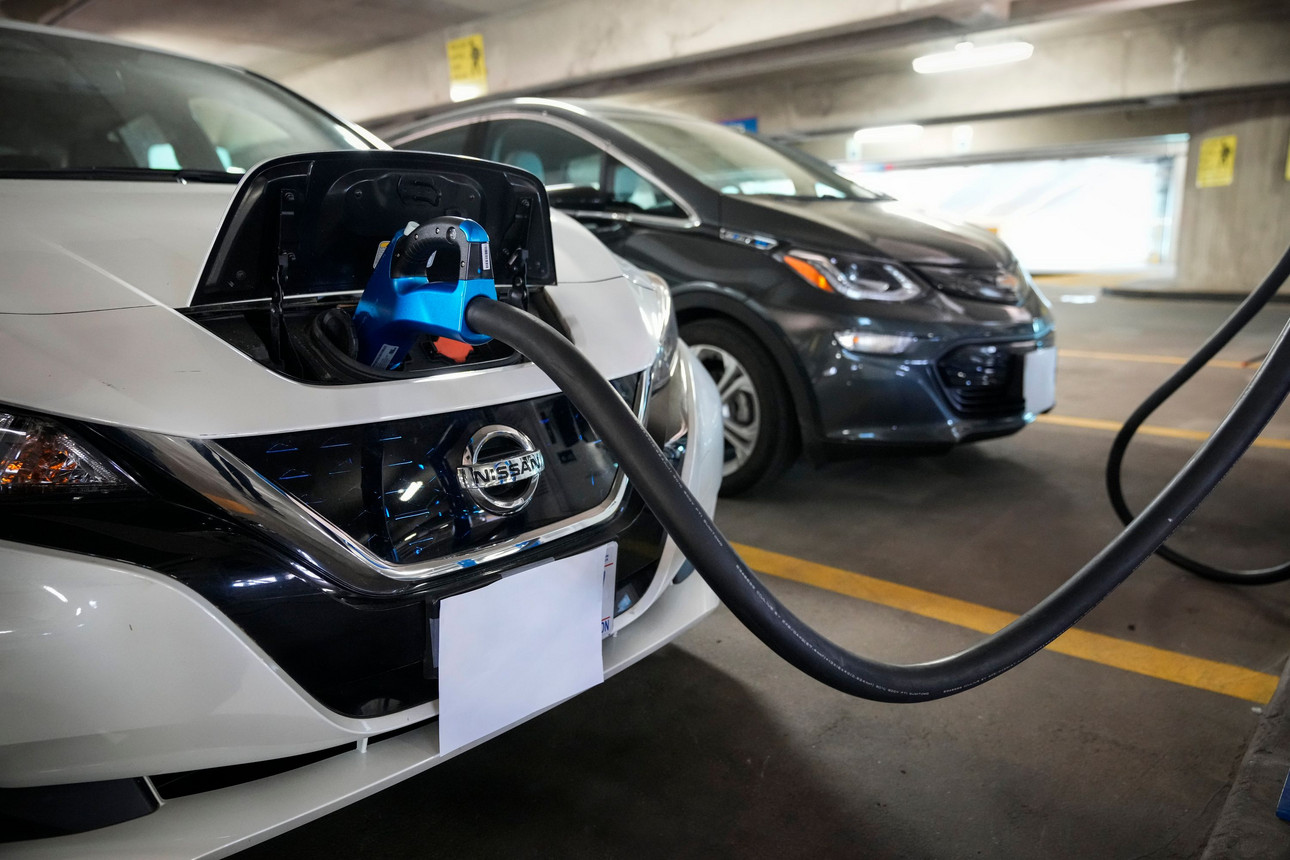Number of electric car drivers running out of battery halves in two years: Just 4% of breakdowns AA attends are now for EVs with zero charge
- AA says around 8% of its annual callouts were for EVs running flat in 2020
- It’s now fewer than 4% with many not running out but their batteries getting low
- AA president Edmund King said range anxiety theory ‘doesn’t match reality’
- He also put the boot into older diesels, saying we will look back at driving them like we do ‘smoking on the top deck of a bus’
Concerns over range anxiety is rapidly becoming a thing of the past and fewer electric car owners are running out of battery while on journeys, the AA says.
The proportion of EVs rescued by the breakdown assistance company for being ‘out of charge’ has halved in the last two years from 8 per cent to under 4 per cent as motorists become more accustom to the requirements of running a car powered entirely by batteries.
Edmund King, the motoring group’s president, says the theory that EVs run out of battery ‘doesn’t match reality’ and shouldn’t put people off switching from their petrol and diesel cars.
And in a passing dig at the combustion engine, he says older diesel cars will soon be looked at ‘the same way we now think about smoking on the top deck of a bus’.
What range anxiety? The AA said fears of electric cars running out of battery is no longer a significant concern with less than 4% of its annual recovery callouts for running out of charge
The AA says very few electric car drivers now run out of battery entirely.
Around half of the 4 per cent of EV-owning customers the AA classifies as an ‘out of charge’ recovery callout have not actually ran the battery to zero per cent but are at low level and fear they won’t make it to the next available charging point.
It says the most common reasons for electric cars to breakdown is exactly the same as with petrols and diesels, namely issues with the 12v battery and tyre woes.
Other EV faults are quite different and cover things such as charging equipment, warning lights, battery monitoring systems or key transponders.
‘In twenty years of driving EVs I have only run out of charge once,’ explains AA president Edmund King, who currently runs an all-electric Porsche Taycan.
‘My first EV was a Ford Think! with a 37-mile range and I once tried to drive from central London to St Albans on a dark, rainy night and didn’t quite make it.
‘Yes, there have been occasions when I have been low on charge or come across chargers out-of-order, but it is hard to run out.’
In Norway, which has a much higher concentration of EVs than the UK, the percentage of out of charge cases has dropped to just 1 per cent as its drivers become acclimatised to owning cars powered entirely by batteries.
King says this is because most electric cars are also well equipped to alert drivers to when they are at risk of running out of battery – and have a number of mitigating failsafes.
The latest EVs have a warning light that illuminates when the battery capacity drops to 20 per cent and others will automatically re-route your sat-nav journey via a charging device.
Others will also put the car into its battery-saving ‘range’ mode, which reduces acceleration and saps less energy.
‘Drivers shouldn’t get hung up about range anxiety because it doesn’t match reality,’ King added in his bid to promote the benefits of making a transition to plug-in cars.
‘Of course, improvements can and are being made to the charging infrastructure but a little planning can take you a very long way.
‘We are also now seeing EVs with much longer ranges and most new EVs can do at least 250 miles.’
He added: ‘Pretty soon, we will think of older diesel cars in the same way we now think about smoking on the top deck of a bus.’
SAVE MONEY ON MOTORING
Advertisement



